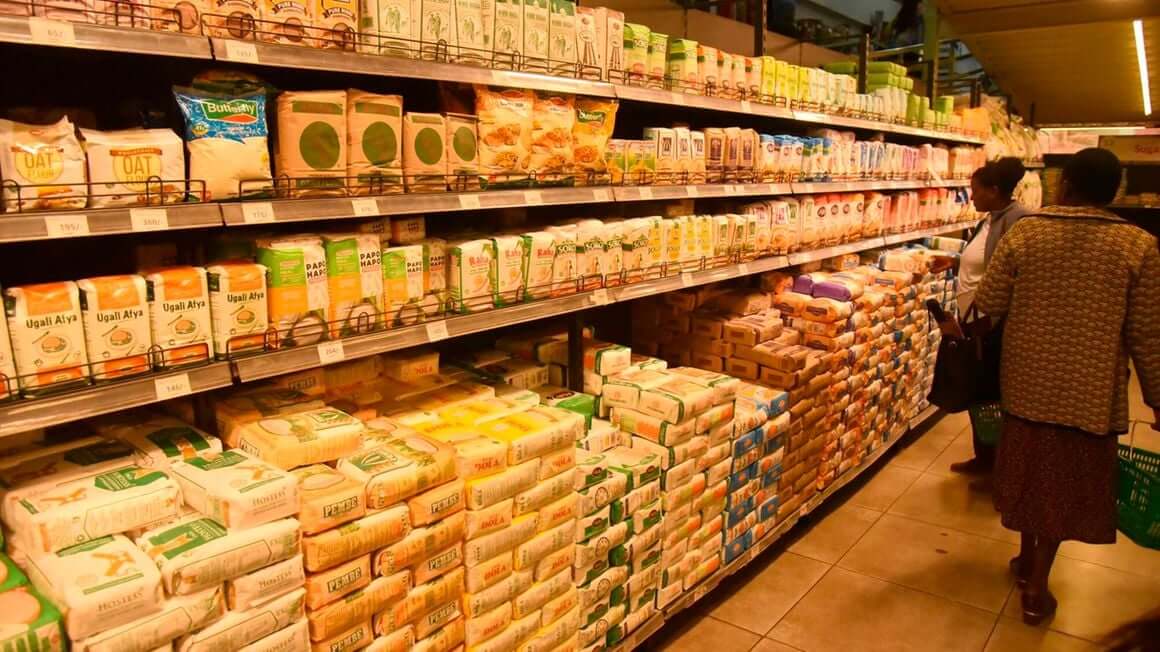
Our Projects are
Transforming African Trade
Quick Contacts
2nd Floor, Fidelity Insurance Centre Waiyaki Way, Westlands

Food prices remain relatively high in Africa from the economic turbulence occasioned by the Russia-Ukraine war and the Covid-19 pandemic, but in Kenya, they are alarmingly high.
Data from the UN Food and Agriculture Organisation (Fao) shows that globally food prices have substantially decreased since the peak in March 2022, and continue on a downward trajectory.
The Fao Global Food Price Index, which measures the change in prices of a basket of five food items – including meat, dairy, cereals, oil and sugar – has dropped by 37.4 points since March 2022.
In Kenya, however, the inflation rate was 7.9 percent in June, driven mostly by a rise in prices foods and non-alcoholic beverages, which have increased by 10.3 percent since last year, according to latest data by the Kenya National Bureau of Statistics (KNBS).
Other countries in the region, although still grappling with inflation, are recording easing food prices, albeit at a pace slower than the global food prices.
Tanzania, for instance, reported an inflation rate of 3.6 percent in June, a slowdown from the 4.0 percent in May. Food prices increased by 7.8 percent in the past year, but are on a downward trajectory, having fallen by 0.3 percent between May and June, figures from the National Bureau of Statistics show.
In Uganda, general consumer prices, including food, have relatively been stable for the past six months, based on data from the Uganda Bureau of Statistics.
So, why are Kenyan consumers still paying so much for food?
According to data from Kenya’s Ministry of Agriculture and Livestock Development, the average retail price of food commodities has increased nine percent since July 2022, yet wholesale prices have dropped by eight percent in the same period.
Farmers too are complaining that they can’t get the best prices for their produce in the market.
The global lobby, Consumers International (CI), says this can be attributed to “unfair practices within the system that need to be investigated by the relevant authorities,” as the prices are rising faster than they should.
At a stakeholder forum convened last week by the lobby and the Competition Authority of Kenya (CAK), CI said there is evidence that anti-competitive practices such as price gouging, price fixing and excessive pricing are causing the unwarranted high food prices.
“The fact of the matter is that the forces of demand and supply are not the ones that determine the prices, I think there needs to be some discussions around that,” said Wambui Mbarire, CEO of Retail Trade Association of Kenya (Retrak).
“This is an area that the government agencies need to do more surveillance to uncover the unfair business practises that are making food more expensive than it should be.”
Davin Minayo, CI’s fair food prices specialist, said addressing the issue will require increased vigilance from the competition watchdog andgreater representation of consumers.
“Tackling unfair food prices requires stronger competition to prevent abuse of market dominance and anti-competitive practices,” he said.
But CAK says that while it is working to curb anti-competitive practices, there is little it can do to bring down food prices, as several factors outside their control drive these up locally.
“What pushes our prices? First, our cost of transportation seems to be high comparatively. Second, there are barriers across counties, which cause additional costs which are ultimately borne by the consumer,” said Boniface Kamiti, head of consumer protection at CAK.
Kamiti also argues that despite Kenya being part of the EAC and Comesa, transporting produce from other member countries where there is a surplus is almost impossible due to trade wars and non-tariff barriers at border points.
These, Kamiti said, need to be addressed through “a wider policy initiative, by essentially addressing the supply side constraints.”
Read original article
Disclaimer: The views and opinions expressed in this article are those of the authors and do not necessarily reflect the official policy or position of TradeMark Africa.